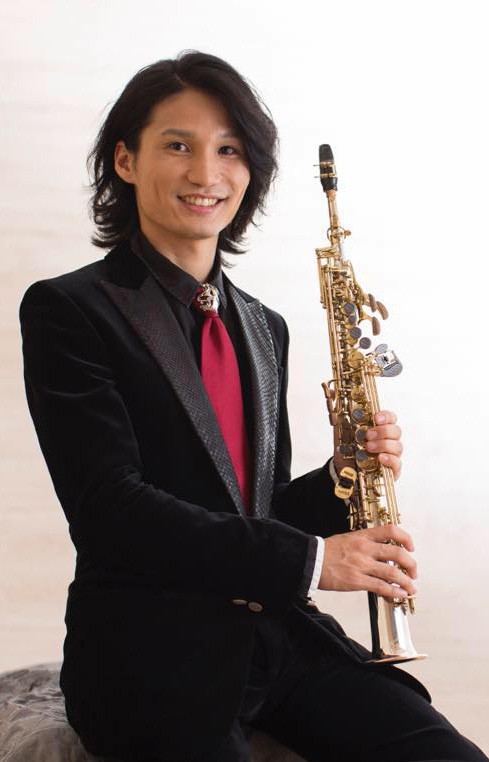
I’ve always had a soft spot for the saxophone, even since I was a teenager. At the time, I was especially impressed with the lyrical playing of Frank Trumbauer whose 1927 recording with Bix Beiderbecke of Singing the Blues was considered a jazz classic. I once laboriously wrote out the music by listening to the record over and over again. Trumbauer was particularly associated with the C-melody saxophone which had a lovely singing tone, though the instrument is rarely seen today.
In a way, it’s curious that the saxophone was so eagerly employed by jazz musicians because it was invented in Belgium in the 1840s, long before the emergence of jazz. To be more accurate, a whole family of saxophones was invented, ranging from the small soprano to the elephantine bass. By the 1850s saxophones were often used in bands and small ensembles all over Europe. The creator of this new instrument was the Belgian inventor Adolphe Sax, who with touching modesty, named the instruments after himself. Today only three types of saxophone are in common use, the alto, tenor and baritone. The soprano sax, popularized by jazz musician Sidney Bechet is less often encountered.
The saxophone was slow to enter the world of classical music. Wagner evidently hated it, yet Berlioz, always on the hunt for something new, was charmed by the instrument’s novel tone quality. Yet even today it rarely appears as a member of the symphony orchestra. The French saxophone player Marcel Mule was largely responsible for bringing the saxophone into the classical world. He played in a restrained style using an embouchure somewhat similar to that used for a clarinet which produced a wonderful, fluid tone quality. His members of his eponymous saxophone quartet played the same way and I remember being captivated when I first heard their recordings. Debussy was probably the first major composer to write a concert work for alto sax and orchestra in 1901, but the most popular concerto is probably that by Glazunov, written in 1934. The 20th century saw dozens of saxophone concertos appear, mostly for alto sax.
Paul Creston is one of the senior composers in American classical music yet surprisingly he was self-taught. He was prolific too and wrote six symphonies and a wealth of other compositions. Musically he is rather conservative, yet the music has a rhythmic drive and melodic appeal. This concerto dates from 1944 and it’s considered one of the composer’s major works. Twenty years after its composition he re-scored for symphonic band. The three-movement work requires advanced technique of the highest order and this performance is especially rewarding because it’s given by the 20-year-old finalist of the BBC’s 2018 Young Musician competition, Rob Burton. His playing is superb throughout, expressively phrased and flawlessly articulated. The first energy-driven movement contrasts with the lovely second movement (06:42) which is flowing and plaintive. The scampering final movement (14:24) also bursts with energy yet has moments of lyricism and reflection with a sudden, dramatic ending.
This concerto is for both soprano and alto saxophones, which are sometimes played simultaneously. The musical language is in sharp contrast to the conservative style of Paul Creston. It stands firmly in the 21st century, sometimes with allusions to the folk and classical music of Thailand. It’s powerful, compelling music by one of Thailand’s new generation of composers who have achieved international success. Currently, Dr. Narong serves as Dean of the College of Music, Mahidol University where he’s also the composer-in-residence for the Thailand Philharmonic Orchestra and the Pacific Symphony in Orange County, California. His compositions have won him the Guggenheim Fellowship and the Alexander Zemlinsky International Composition Competition Prize.
This technically challenging work is played by another young musician of enormous talent. Yo Matsushita, who graduated at the Tokyo University of Fine Arts provides a captivating performance and plays with a rich and commanding tone quality with a keen sense of phrasing, dynamic contrast and articulation.
This concerto was published in 2013 and its composer writes, “Cast in one movement with many subplots, Maha Mantras is a concerto for saxophonist switching between soprano and alto, and features a dazzling tour-de-force cadenza in which the soloist plays both instruments simultaneously… it’s based on pentatonic themes tinged with highly ornate and chromatic shadings. The work’s title indicates a magnification and development of the composer’s earlier work, Mantras both compositions inspired by the creation of music as a healing force.”
Narong Prangcharoen’s concerto is powerfully charged yet there are many moments of sublime calm. The middle of the work is an extended cadenza which leads into a short final dramatic section with pounding percussion, frenetic orchestral writing and the extreme top notes of the soprano sax. It’s thrilling music.
 |
 |
 |





